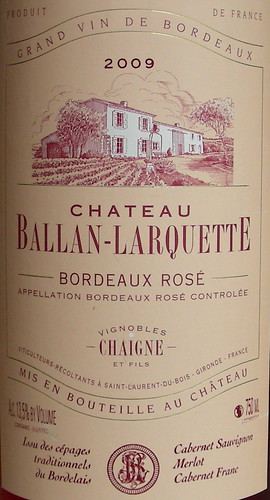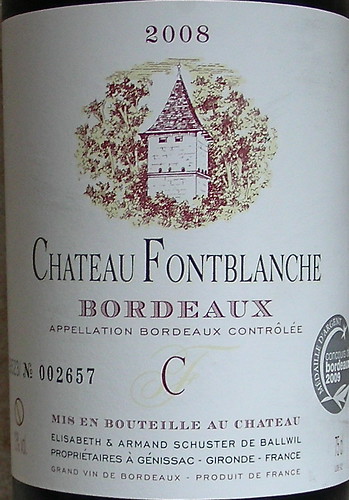Piedmont is home to many indigenous grape varieties including Barbera, Nebbiolo, Dolcetto, Freisa, Grignolino and Brachetto. While Barbera is the most widely-planted grape in the region, producing plummy dark wines naturally high in food-friendly acidity, Nebbiolo is considered one of the most noble Italian varietals. It is quite difficult to master but it can produce ageworthy wines known for their elegance and power. Vineyards are usually found on the hills at altitudes between 490-1150 feet, with the warmer south-facing slopes planted to Nebbiolo and Barbera, and the colder areas dedicated to Dolcetto and white varietals.
Big wine estates are rare in Piedmont. The vast majority of producers are small-to-medium wineries, often owned by the same family for generations.
We tasted our wines blind accompanied by a chicken liver terrine, braised short ribs cooked in wine, and cheese.

Chicken Liver Terrine

Braised Short Ribs
Here are the wines that we tasted:
 • 2006 Luciano Sandrone Nebbiolo d'Alba Valmaggiore: founded in 1978, the Luciano Sandrone estate farms a total of 27 hectares (67 acres), 75% of which is owned, and produces about 8,000 cases per year. The winery follows organic farming rules although it has not chosen to seek certification. It uses organic fertilization and pest treatments and no chemicals or enzymes are added to the wine. The wine is produced with Nebbiolo grapes from Valmaggiore, one of the historical cru vineyards in the Roero district around the commune of Vezza d'Alba. The vineyard is on a hill characterised by an extreme slope and very sandy soil. The average vine age is 25 years. Sandrone purchased this parcel in 1994 and replanted the vines in 2001 at a density of 9,000 per hectare. Our notes: medium red color with orange tints, dairy nose with notes of red berries, cherries, and caramel, tannic with a solid mid-palate, good finish. Was ranked third in our tasting.
• 2006 Luciano Sandrone Nebbiolo d'Alba Valmaggiore: founded in 1978, the Luciano Sandrone estate farms a total of 27 hectares (67 acres), 75% of which is owned, and produces about 8,000 cases per year. The winery follows organic farming rules although it has not chosen to seek certification. It uses organic fertilization and pest treatments and no chemicals or enzymes are added to the wine. The wine is produced with Nebbiolo grapes from Valmaggiore, one of the historical cru vineyards in the Roero district around the commune of Vezza d'Alba. The vineyard is on a hill characterised by an extreme slope and very sandy soil. The average vine age is 25 years. Sandrone purchased this parcel in 1994 and replanted the vines in 2001 at a density of 9,000 per hectare. Our notes: medium red color with orange tints, dairy nose with notes of red berries, cherries, and caramel, tannic with a solid mid-palate, good finish. Was ranked third in our tasting. • 2003 Aurelio Settimo Barolo Rocche: founded in 1979, Aurelio Settimo is a 5.67 hectares (14 acres) property producing mostly Nebbiolo and a small amount of Dolcetto. The property used to do mixed farming and animal breeding and until 1974, 50% of the grapes were sold to the larger local wineries. But since the 1974 vintage, all the production has been vinified on site. The wine comes from the Rocche dell'Annunziata cru, a 3.42 hectare vineyard facing south-southwest and one of the four historic vineyards in La Morra. Our notes: orange hues, nose of sweet berries and prunes, good fruit flavor and acidity on the palate with some herbal notes. Food friendly, great with the braised ribs. Finished in 2nd position.
• 2003 Aurelio Settimo Barolo Rocche: founded in 1979, Aurelio Settimo is a 5.67 hectares (14 acres) property producing mostly Nebbiolo and a small amount of Dolcetto. The property used to do mixed farming and animal breeding and until 1974, 50% of the grapes were sold to the larger local wineries. But since the 1974 vintage, all the production has been vinified on site. The wine comes from the Rocche dell'Annunziata cru, a 3.42 hectare vineyard facing south-southwest and one of the four historic vineyards in La Morra. Our notes: orange hues, nose of sweet berries and prunes, good fruit flavor and acidity on the palate with some herbal notes. Food friendly, great with the braised ribs. Finished in 2nd position. • 2005 G. D. Vajra Barolo Albe: Founded in 1972, the Azienda Agricola G. D. Vajra is regarded as one of the most reputed Barolo producers in the area. It is situated in Vergne, the highest village in the Commune of Barolo. Its vineyards are planted with Nebbiolo, Dolcetto and Barbera at heights of 350-400 meters. The cuvée Albe is a blend from three different vineyards, Fossati, Le Coste, and La Volta. Albe is the plural of alba, which means dawn. According to the winery website, here is the explanation for the name: when the sun rises in the morning, it takes about 20 minutes for the dawn to reach each vineyard, which results in three different albe (dawns). Our notes: medium red color, shy nose with notes of dried herbs, acidic on the palate and quite green with not much fruit flavors. Quite unbalanced but better with sharp-flavored cheese. Finished in 6th position.
• 2005 G. D. Vajra Barolo Albe: Founded in 1972, the Azienda Agricola G. D. Vajra is regarded as one of the most reputed Barolo producers in the area. It is situated in Vergne, the highest village in the Commune of Barolo. Its vineyards are planted with Nebbiolo, Dolcetto and Barbera at heights of 350-400 meters. The cuvée Albe is a blend from three different vineyards, Fossati, Le Coste, and La Volta. Albe is the plural of alba, which means dawn. According to the winery website, here is the explanation for the name: when the sun rises in the morning, it takes about 20 minutes for the dawn to reach each vineyard, which results in three different albe (dawns). Our notes: medium red color, shy nose with notes of dried herbs, acidic on the palate and quite green with not much fruit flavors. Quite unbalanced but better with sharp-flavored cheese. Finished in 6th position. • 2006 Agostino Pavia Barbera d'Asti Superiore La Marescialla: founded in 1979, Agostino Pavia is a small family estate located in the heart of the production area of Barbera d'Asti. The estate has several 50-year-old vineyards covering seven hectares, partly owned and partly rented. La Marescialla is one of the crus of Barbera d'Asti. The wine is produced from careful grape selection from one of the oldest vineyards of the estate and is aged about 11-12 months in barriques. Our notes: darker color, dairy aromas on the nose with notes of citrus, caramel, and vanilla. On the palate, not as tannic, but assertive with fruity flavors, well balanced. Finished in 4th position.
• 2006 Agostino Pavia Barbera d'Asti Superiore La Marescialla: founded in 1979, Agostino Pavia is a small family estate located in the heart of the production area of Barbera d'Asti. The estate has several 50-year-old vineyards covering seven hectares, partly owned and partly rented. La Marescialla is one of the crus of Barbera d'Asti. The wine is produced from careful grape selection from one of the oldest vineyards of the estate and is aged about 11-12 months in barriques. Our notes: darker color, dairy aromas on the nose with notes of citrus, caramel, and vanilla. On the palate, not as tannic, but assertive with fruity flavors, well balanced. Finished in 4th position. • 2000 Paolo Scavino Barolo Carobric: Azienda Vitivinicola Paolo Scavino was established in 1921 by founder Paolo Scavino in the commune of Castiglione Falletto. Today, the winery is run by Paolo's two granddaughters, Elisa (winemaker) and Enrica (marketing). The Carobric cuvee (Ca-Ro-Bric) is a selection of grapes from Scavino's best crus: Cannubi, Rocche di Castiglione, and Bric dël Fiasc. It is aged in a combination of barrique and cask. Our notes: orange/brown color, shy nose getting richer with more time in the glass, round, tasty, complex, well balanced, with a long finish. The wine was a clear favorite, maybe because it had reached its peak. Finished in first position.
• 2000 Paolo Scavino Barolo Carobric: Azienda Vitivinicola Paolo Scavino was established in 1921 by founder Paolo Scavino in the commune of Castiglione Falletto. Today, the winery is run by Paolo's two granddaughters, Elisa (winemaker) and Enrica (marketing). The Carobric cuvee (Ca-Ro-Bric) is a selection of grapes from Scavino's best crus: Cannubi, Rocche di Castiglione, and Bric dël Fiasc. It is aged in a combination of barrique and cask. Our notes: orange/brown color, shy nose getting richer with more time in the glass, round, tasty, complex, well balanced, with a long finish. The wine was a clear favorite, maybe because it had reached its peak. Finished in first position. • 2003 Massolino Barolo: located in the commune of Serralunga d'Alba, the Massolino estate has been in the family since 1896 and today has 15 hectares of vineyards around the village. The Barolo is a blend of several estate vineyards. Grapes are hand-picked and the winemaking is traditional. The wine id aged 30 months minimum in large oak barrels with further bottle ageing for at least one year before release. Our notes: bright medium red color, nose of sweet fruit and citrus, some tannins and acidity on the palate that became softer with more time in the glass, not as balanced as the Carobric. Finished in 5th position.
• 2003 Massolino Barolo: located in the commune of Serralunga d'Alba, the Massolino estate has been in the family since 1896 and today has 15 hectares of vineyards around the village. The Barolo is a blend of several estate vineyards. Grapes are hand-picked and the winemaking is traditional. The wine id aged 30 months minimum in large oak barrels with further bottle ageing for at least one year before release. Our notes: bright medium red color, nose of sweet fruit and citrus, some tannins and acidity on the palate that became softer with more time in the glass, not as balanced as the Carobric. Finished in 5th position.Related posts:
• Tasting the wines of Piedmont
• Blind Tasting of Bordeaux Right Bank wines
• Syrah Blind Tasting
Technorati tags: wine food & drink



